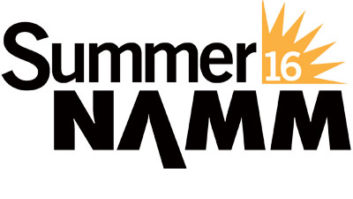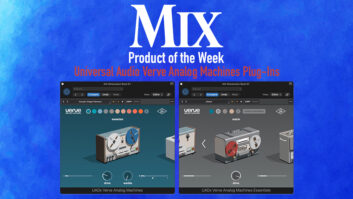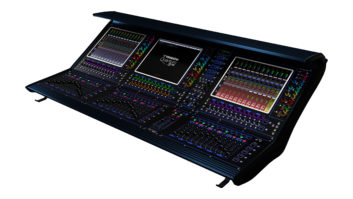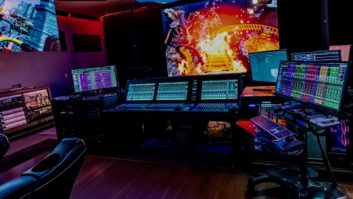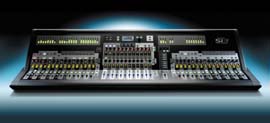
After months of success with its Vi Series high-end touring boards, Soundcraft unveiled its latest entry—the mid-market Si3—yesterday at the PLASA live sound show in London. And while this latest console shares much of the technology of its larger-format cousins, the Si3 takes a new direction with a decidedly different—yet quite familiar—twist on ergonomics.
“Our intention is to provide engineers still using analog consoles an easy transition to digital through simply switching to the Si3,” says product manager James Shears.
Designed for either touring or fixed installations, the Si3 comes in one flavor, with 64 mono inputs, four stereo ins and 35 output buses (24 aux/group, eight matrixes and L/C/R main mix outs)—all in a single chassis including the control surface, rear panel I/Os and internal power supply. Also standard are four onboard Lexicon effects processors, 12 VCA groups, eight mute groups, bar graph metering for all 35 bus outputs, comprehensive internal/external talkback, built-in tone oscillator and eight analog insert points for using outboard processing on the outs. And rather than the usual cost-saving method of using DB25 multipin connections, the Si3 has balanced rear panel XLRs for all channel I/Os and buses.
This all-encompassing approach in a compact (66.3×32.1×13.3-inch, WxDxH) design will appeal to users seeking an easy set-up/plug-in replacement for an analog desk. While the Si3 is offered in one frame, options include a redundant secondary power supply module and four rear panel slots that accommodate MADI interfaces or AES/EBU input cards.
Much of the Si3’s appeal stems from its new take on the control surface itself. Gone is the typical central screen common to many digital mixer designs; it is replaced by a compact touchscreen used mainly for console setups and housekeeping functions. Taking the topology from Soundcraft’s earlier 328 and 324 mixers to the next level, the Si3 combines the analog-style control of gain, EQ, dynamics, aux sends, pan, phantom power, polarity reverse, etc., of the Virtual Channel Strip (VCS) with rotary encoders and bright OLED displays.

The Soundcraft Si3’s OLED displays
OLEDs and encoders in the output section are used primarily for output signal controls such as EQ, dynamics or Matrix routings, but when needed, they can also serve as dedicated controls for the Lexicon processing. Alternatively, any output encoders/OLEDs can be switched to handle EQ and dynamics control for any selected input or output channel—whenever a user may prefer central control.
The Si3 also employs Soundcraft’s FaderGlow™ system, which uses a multicolor LED with a unique diffuser alongside the fader track to indicate which function is currently active on the fader. When used to control aux or monitor sends, the faders illuminate orange (or green for groups, blue for VCAs, etc.) in line with the corresponding function. Any confusion about whether a fader is assigned to a channel input, group, aux or VCA is eliminated. And as the color codings follow the Soundcraft Vi6 setup, engineers moving between consoles will be equally at home with both.
Beneath that control surface is Soundcraft’s Embedded Multiprocessor Mixing Architecture (EMMA), a single PCB with Analog Devices SHARC processors handling all functions on an embedded operating system within the mixing core, and four Lexicon AudioDNA chips for the onboard effects. Dynamics—such as gates and compressors—are drawn from the heritage of sister Harman companies dbx and BSS Audio.
EMMA is a “totally new DSP engine,” explains Si3 R&D project manager Matt Rowe. “Being custom designed and using embedded software provides us the absolute maximum processing power with minimal latency.”
Certainly, there’s a lot more to the Si3, which offers full storage of console settings as presets that can be sequenced from a cue list and recalled from dedicated automation keys. The board has Harman HiQnet network control, and an offline editor lets users create/tweak/store console setups—from the hotel, tour bus or anywhere using a laptop PC.
The Si3 debuts this week in London at PLASA (booth D22) and makes its North American launch at AES (booth #202), or check it out online at www.soundcraftdigital.com.
For more information on new product releases, visit the Briefing Room.




